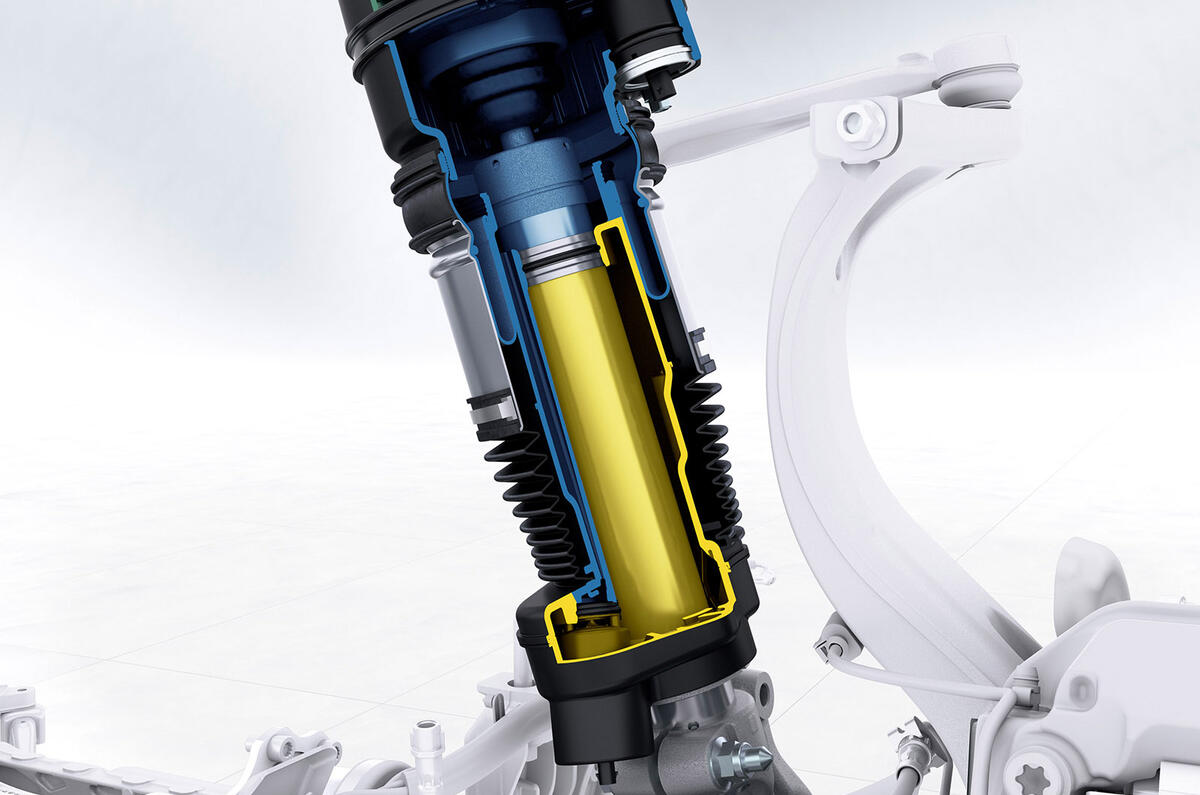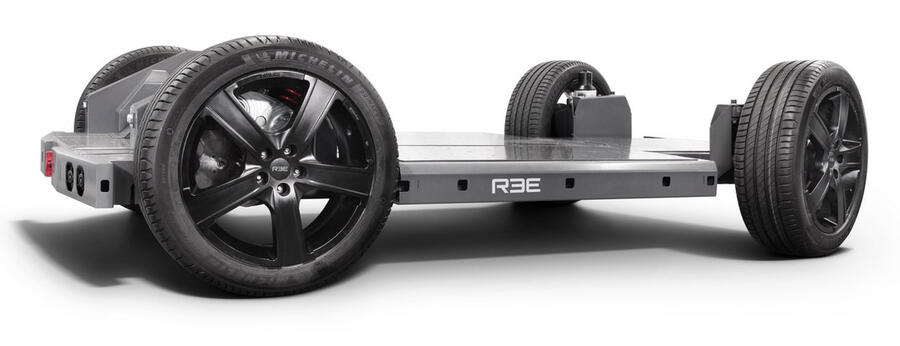Air suspension, once associated only with a luxury ride, has now been adopted across a wide range of premium cars, because of its versatility.
Air suspension can arguably contribute to the most comfortable ride, drop the ride height low to ease getting in and out of an SUV, for instance, and reduce drag at higher speeds. It can then raise it for normal use, or even higher to increase ground clearance for off-road driving, and can be designed to change the spring rates in support of different driving modes. Air suspension can be used with any kind of damping system, including magnetorheological adaptive dampers and variable-stiffness anti-roll bars.
Air suspension units replace existing coil springs and are integrated into suspension struts. Alternatively, air springs can be used independently of dampers, particularly at the rear. The air ‘spring’ itself is normally formed by a tough, flexible airbag. They come in various types and sizes but ultimately do the same job, which is to take over the job of the steel coil spring. Using compressed air, they work a bit like a miniature and more sophisticated bouncy castle, with the air giving more resistance as it compresses.
What started as a fairly crude affair used in trucks and buses has become a microprocessor-controlled precision system capable of much more than a conventional spring. Unlike steel springs, the deflection of air spring suspension (suspension travel) isn’t proportional to the load placed upon it. That’s why the air spring can not only function like a spring but can be used to raise and lower the ride height as well. Air pressure to ‘pump up’ an air spring is supplied by a compressor, and there’s usually a reservoir to provide instantaneous pressure as the spring is working.
Inevitably, as the air spring has evolved, so has its complexity and capability. As well as variable ride height, modern systems cater for different driving modes, while control software can adapt settings to individual driving styles. It can also be used for load-levelling, preventing the car sitting on its haunches when heavily loaded or towing.
An example of a more sophisticated system is Porsche’s three-chamber air spring, which gives even more effective variation between comfort, sport and off-road settings. As the name suggests, each strut is separated into three chambers, two of which can be excluded at any one time. For the softest ride, in Comfort mode, all three are brought into play to give the maximum volume of air; then two for Sport and one for Sport Plus, which contains a much smaller compressible volume of air, creating a stiffer spring.
Despite the fancy brand names that car manufacturers give their air spring systems, the hardware is developed by various suppliers, such as BWI and Continental, with manufacturers getting involved at the software-tuning stage to suit a specific car as well as the exact specification of the hardware. And that hardware has become very sophisticated, with the simple rubber bellows of early systems now made from materials such as crossply Kevlar or crossply nylon fibres for robustness.






Join the debate
Add your comment
Hydractive 2
better, in every way. Including reliability.
I wanted a sofa on wheels for
I wanted a sofa on wheels for when I'm just mooching about and bought a used Lexus LS. Did the research first and made sure I got steel springs.
Shame about the reliability
AIr suspension is great until it goes wrong. Fine if you're in warranty but a used buyers nightmare. I'd definitely get an aftermarket warranty if I was buying a used car with air suspension because the reputation of air suspension preceeds it...
Will86 wrote:
Yes, it's just another case of adding unnecessary complication. There are many cars that have managed to provide a good ride and handling with a simple coil spring or torsion bar set-up. I can understand it being useful for off-roaders if they really are going to be used seriously off-road. Some of Autocar's roadtesters have also often alluded to increased noise from air suspension units.